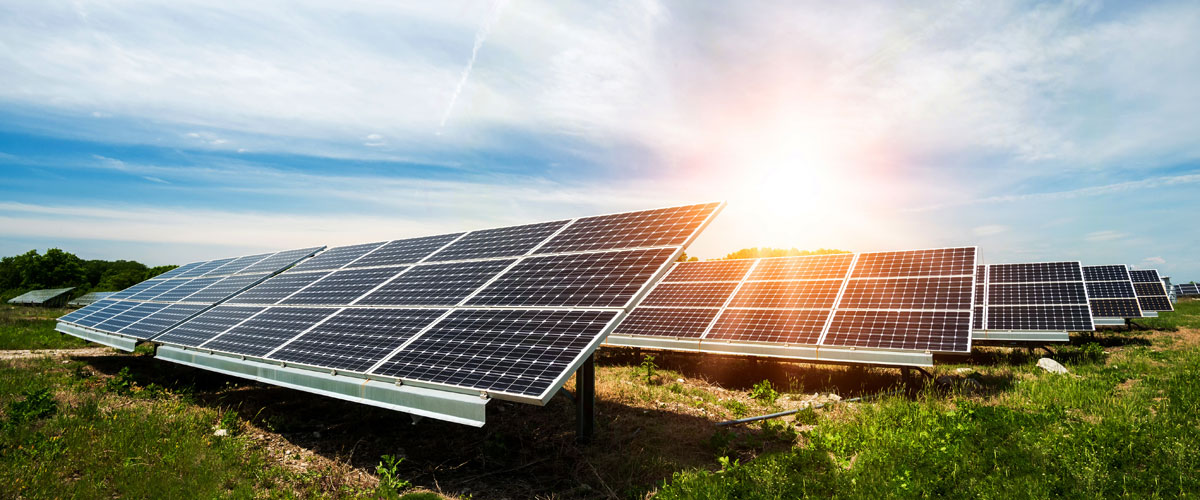Solar energy is the power harnessed from solar energy which is the renewable source of power. This is a free and clean energy that is directly generated using sunlight which is available in abundance free of cost. This sustainable and environment-friendly source of energy reduces the reliance on traditional electricity sources like fossil fuels that generate carbon emissions and many more harmful greenhouse gases.
India’s best geographical location makes it an ideal destination for on ground solar installation, rooftop solar installation, and other solar systems. It gets tropical sunlight in a large amount throughout the year. The produced solar energy can be used in residential, commercial, and industrial sectors for numerous applications.
This renewable energy reduces the carbon footprint and decreases the risk of global warming. No pollution is created during solar power production. But, the major issue for the common man is that they can’t afford the expensive cost of solar system installation. That’s a reason the Indian government provides a solution of subsidy schemes and many more incentives to promote the switch to solar power consumption for residential use.
What is a rooftop solar subsidy in India?
This is an initiative by the Indian government to encourage solar rooftop installation and solar power usage in the country. Through this subsidy or Yojana, the central government promotes the use of green power.
Why government provides solar subsidy?
State Nodal Agencies (SNA) and Central Government have introduced several subsidy schemes to encourage homeowners to adopt solar energy. The Indian government had set a target to install 40GW solar panels at residential properties but only 5GW was achieved till 2021. Now, India has a target of 280GW solar panels by the end of 2030.
To achieve this target, the government has started an initiative to install solar systems in residential buildings. After installation, they will have to send the installation photo to the closer electricity board.
The Indian Ministry of New and Renewable Energy has declared many Central Financial Assistance schemes to achieve the target of 100GW solar power usage. The subsidies on solar panels are provided for residential, social, and institutional sectors. These are not meant for industrial, public, and commercial sectors.
Central Government pays solar subsidy of 20% for solar rooftop systems between 3 and 10kW of system capacity and 40% for systems up to 3kW capacity. No subsidy is provided for systems having more than 10kW capacity. However, it is estimated that the subsidy can be restricted to 10kW of maximum capacity.
Uttar Pradesh State Government pays Rs. 30,000/- flat subsidy from 2KW – 10KW.
Subsidy benefits for customers
Gaining subsidy benefits is the best experience after installing solar panels in homes. The rooftop solar subsidy in India is provided for big apartments and residential homes. You can’t claim it for a grid-connected solar system that has no battery system. Household users can install their required solar system and avail subsidy through their respective state DISCOM (distributed companies).
The average installation cost of a solar rooftop photovoltaic system will be approximately 60K-70K. After availing of a solar system subsidy, the total installation cost will range between 42K and 49K. Installing solar systems using a subsidy scheme help in receiving five years of performance warranty from the solar installation company.
After 5 years, you’re self-responsible for your system. You can even sell extra power generated by your system back to the grid and get a regulated cost per unit according to the tariffs set by the government.
Several solar schemes introduced by the Indian government
- For grid-connected rooftop system
Central Financial Assistance (CFA) of 40% upto 3KW and 20% 3KW and above upto 10KW.
- For solar pumps
Pradhan Mantri Kisan Urja Suraksha Evam Utthaan Mahabhiyan Yojana is a scheme to subsidise farmers to install solar irrigation pumps for cultivation. Each farmer will receive a 60% subsidy to set up tube wells and pump sets. They will also get 30% of the total cost as a loan from the Government.
The National solar subsidy scheme or DBT scheme
In the National solar subsidy scheme or DBT (Direct Bank Transfer) scheme, the subsidy will be credited into the customer’s bank accounts within 30 days of the assigning of the solar system. This scheme is highly beneficial because you can get it even when your state doesn’t provide any solar panel subsidy. For this, you have to apply for the same through the National Portal for Rooftop Solar.
Conclusion
The Indian government has a target to install household rooftop solar systems with the capacity to produce 4GW of solar power by the end of 2024. It is expected that once this target will be achieved, no subsidy will be provided to consumers. Hence, today is the right time to get financial help from the government as a subsidy.
To know more about the state-wise solar system subsidy and more, you can contact us at Megamax Solar, a leading solar energy system and solution provider. We provide comprehensive solar services like micro grid installation and solar micro grid maintenance, solar street light, solar rooftop, solar electric fences, and more for various applications to make the world pollution-free.

